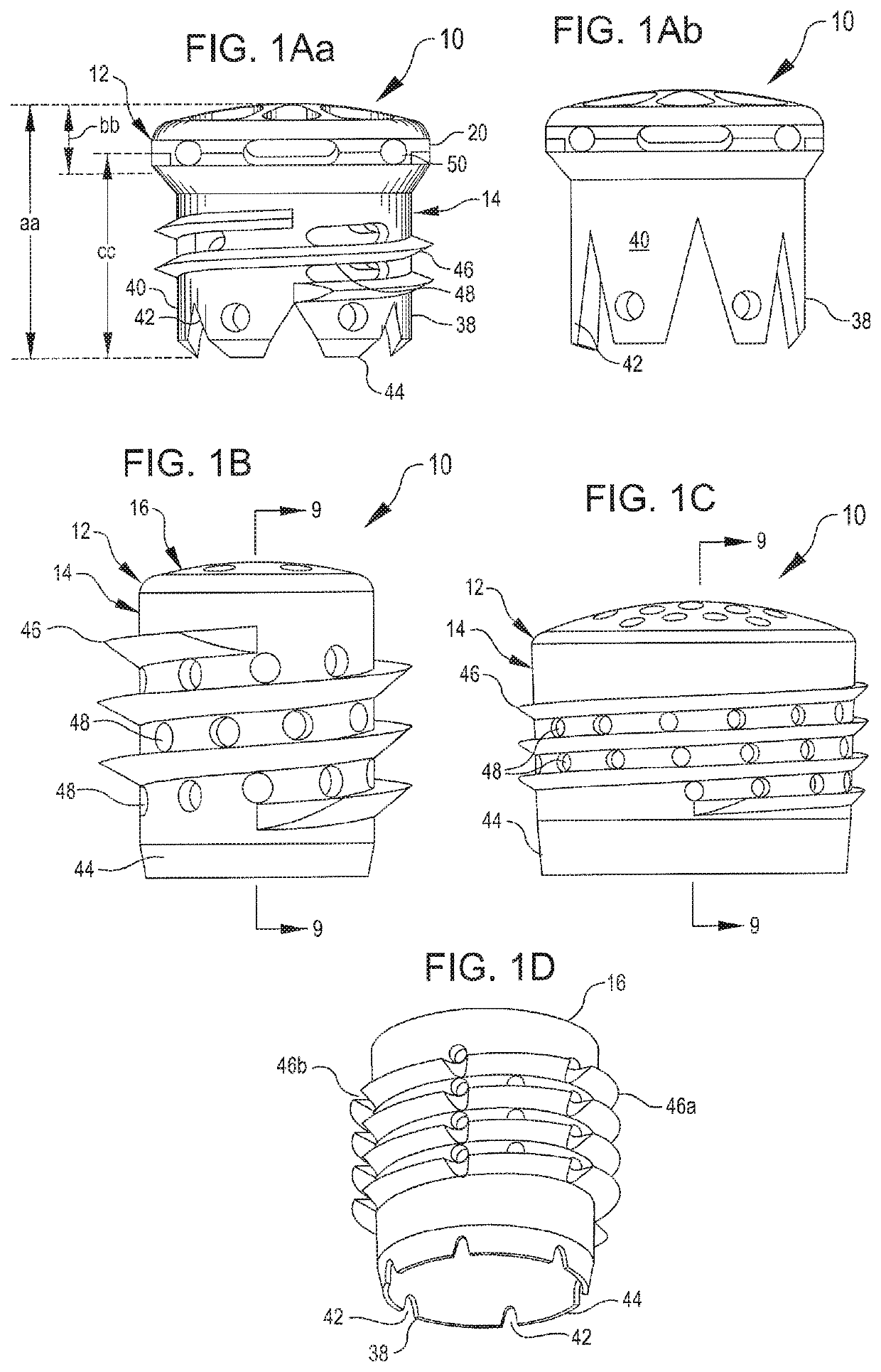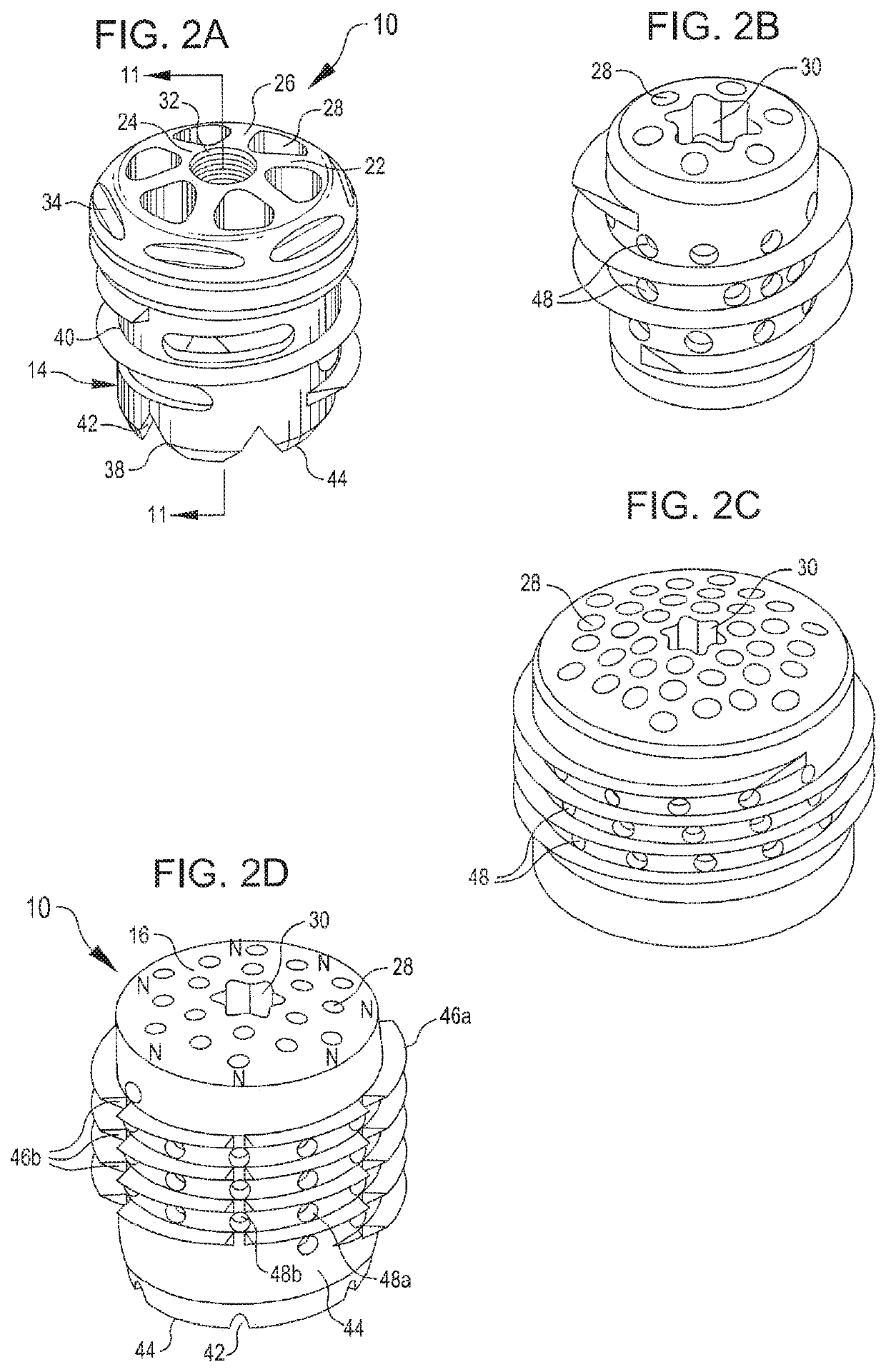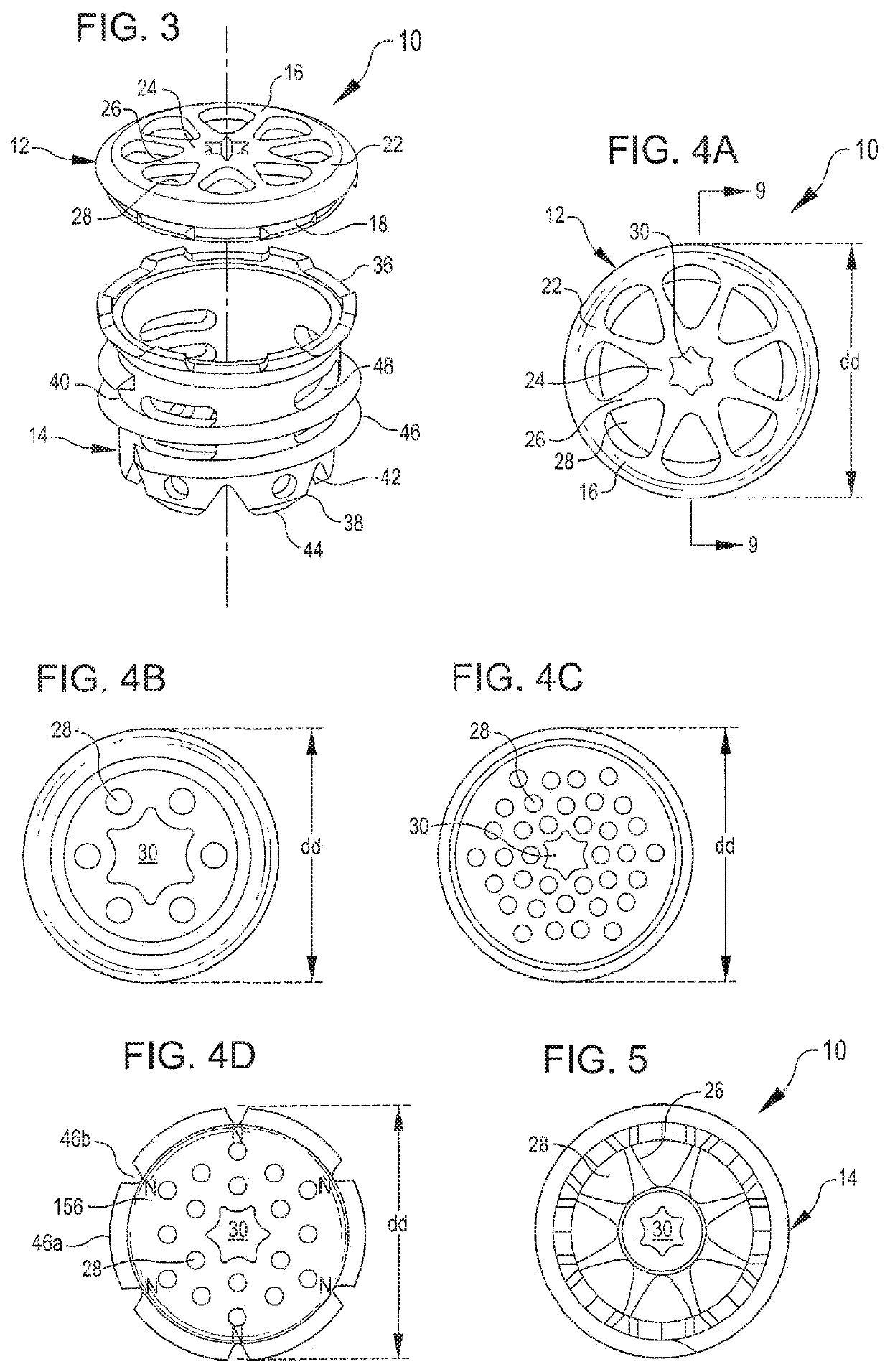Methods, systems and devices for repairing anatomical joint conditions
a technology of anatomical joints and systems, applied in the field of methods, systems and devices for repairing anatomical joints, can solve the problems of cartilage deterioration, pain, swelling, and/or anatomical degeneration of the knee, and achieve the effect of efficient leverag
- Summary
- Abstract
- Description
- Claims
- Application Information
AI Technical Summary
Benefits of technology
Problems solved by technology
Method used
Image
Examples
Embodiment Construction
[0103]According to one embodiment of the present invention there is provided a device for repairing anatomical joint conditions and ameliorating joint conditions. According to another embodiment of the present invention, there is provided a method for repairing anatomical joints and ameliorating a joint condition so, preparing a defect at a treatment site on a bone to repair an anatomical joint, a cannula for retracting a target tissue, a method for delivering at least one biomaterial to a primary treatment site, and a kit for repairing an anatomical joint. In one embodiment, the method comprises providing a device according to the present invention. These embodiments will now be described in detail.
[0104]As used in this disclosure, except where the context requires otherwise, the term “comprise” and variations of the term, such as “comprising,”“comprises” and “comprised” are not intended to exclude other additives, components, integers or steps.
[0105]As used in this disclosure, exc...
PUM
 Login to View More
Login to View More Abstract
Description
Claims
Application Information
 Login to View More
Login to View More - R&D
- Intellectual Property
- Life Sciences
- Materials
- Tech Scout
- Unparalleled Data Quality
- Higher Quality Content
- 60% Fewer Hallucinations
Browse by: Latest US Patents, China's latest patents, Technical Efficacy Thesaurus, Application Domain, Technology Topic, Popular Technical Reports.
© 2025 PatSnap. All rights reserved.Legal|Privacy policy|Modern Slavery Act Transparency Statement|Sitemap|About US| Contact US: help@patsnap.com



